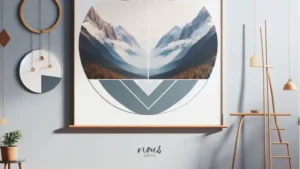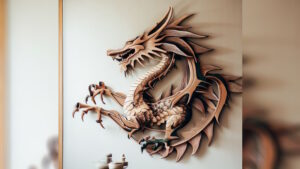Selecting Wall Art For Children Rooms requires balancing your child’s interests, age-appropriateness, safety, and design. The best children’s wall art tells a visual story through illustrations, nature scenes, animals, shapes, and colors.
In this comprehensive Nousdecor guide, I’ll share tips to help you find the perfect wall art for your kid’s special space. After reading, you’ll feel confident choosing wall art that delights your child and complements their space. Let’s explore the wonderful world of children’s wall art!
Key Takeaways of Wall Art For Children Rooms
- Choose art based on your child’s age, interests, and safety needs
- Select the right types of wall art for a child’s room
- Determine the best placement for art in your child’s bedroom
- Create an art display that enhances your child’s room decor
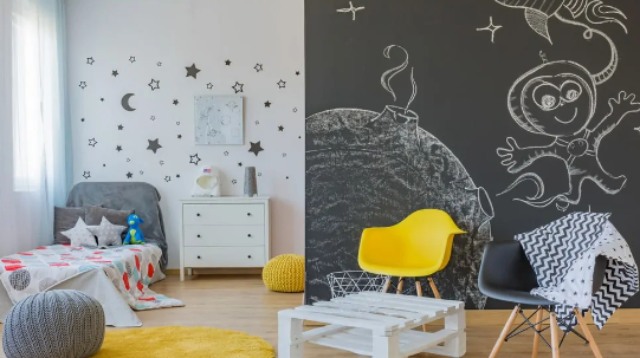
Choosing Art Based on Your Child’s Interests, Age, and Room
When selecting wall art for your child’s bedroom, tailor the pieces to your child’s unique personality and stage of development. School-aged children have diverse passions ranging from space exploration to baby animals. Selective wall art trends shaped by pop culture can be good as well.
Playful preschoolers delight in silly cartoons and storybook characters. Pay attention to the images, colors, and themes that captivate your child. Matching the art to their interests ensures it will engage and inspire them.
Consider Your Child’s Age and Abilities
Think about your child’s age and abilities when deciding on wall art. Babies enjoy high-contrast black and white patterns.
- For toddlers, opt for large, simple art with familiar objects like animals, toys, and vehicles.
- Preschoolers appreciate bright colors, letters, numbers, shapes, and whimsical characters.
- Elementary-aged kids enjoy detailed illustrations depicting their hobbies and favorite stories.
Select age-appropriate materials and construction. Sturdy canvas, wood, or metal art withstands rough handling. For babies, use non-toxic inks and unbreakable materials. Avoid art with sharp edges or tiny pieces that could pose safety hazards.
Complement Your Child’s Room Style and Color Scheme
The modern wall decor ideas and inspiration should integrate seamlessly with the room’s existing style. For a playful preschool room, choose friendly animal prints or alphabet art. In a teen’s room, display trendy pop culture prints they’ll love showing off to friends.
Make sure the art’s colors and textures complement the room’s color scheme and materials. Match cool neutral art to a palette of grays and blues. Warm tropical art pops against coral and yellow walls.
Distressed wood art fits perfectly in a rustic cabin-themed room. Art that clashes with your child’s room will look out of place.
5 Types of Wall Art Perfect for Kid’s Rooms
Children’s wall art comes in endless fun varieties. From hand-painted murals to removable decals, you can find a piece that showcases your child’s personality. Here are five of the most popular types of wall art for kid’s bedrooms that you can search on specialized markets for wall decor:
1. Animal Wall Art
Animal art, like forest prints or safari illustrations, tops the list of popular children’s wall art. Kids innately love creatures like horses, tigers, elephants, dolphins and dogs.
Choose friendly, smiling critters for a playful accent wall mural or canvas art print above the bed. For an exotic accent, hang a black and white zebra print or flamingo poster. Animal art appeals to children of all ages.
| Type | Materials | Placement |
|---|---|---|
| Forest Wall Mural | Paint on wall | Accent wall |
| Lion Canvas Art Print | Stretched canvas | Above bed |
| Zebra Picture Print | Paper poster | Gallery wall |
2. Nature Wall Art
What child doesn’t love the beauty of nature? Floral prints, leafy jungle scenes, mountain landscapes, and ocean waves make stunning children’s wall art. Calming nature-inspired rooms help kids feel peaceful and grounded.
Add an aspirational travel element with a map print, compass rose, or chalkboard world map. Use natural textures like bamboo, reclaimed wood, or rattan frames to complement the art.
| Type | Materials | Placement |
|---|---|---|
| Birch Tree Wall Mural | Peel-and-stick mural | Accent wall |
| Mountain Landscape Canvas | Stretched canvas | Above bed |
| World Map | Framed print | Above desk |

3. Educational Wall Art
Nurture your child’s learning with alphabet art, number prints, times tables charts, and illustrated maps. Seeing educational images on the walls reinforces lessons from school.
For a personalized touch, display your child’s own art, writing, and creations. Surround your little scholar with inspiring visual aids that boost confidence and academic growth.
| Type | Materials | Placement |
|---|---|---|
| Illustrated World Map | Framed print | Above desk |
| Custom Alphabet Art | Canvas print | Accent wall |
| Math Facts Poster | Paper poster | Gallery wall |
4. Illustrative Wall Art
Does your child have a favorite picture book or character? Bring their beloved stories to life with illustrative art.
Commission a custom mural featuring characters from a cherished book. Or frame vintage prints of classic storybook characters like Winnie the Pooh. Seeing beloved fictional friends watch over their room comforts children and sparks the imagination.
| Type | Materials | Placement |
|---|---|---|
| Custom Storybook Mural | Hand-painted on wall | Accent wall |
| Winnie the Pooh Print | Framed paper print | Above bed |
| Dr. Seuss Wall Decals | Removable vinyl | Gallery wall |
5. Abstract Wall Art
Contrary to popular belief, children appreciate abstract art too. Bold shapes, colors, patterns, and textures delight young minds and eyes.
Mix modern graphic prints, 3D sculpture wall art, acrylics, and photography featuring imaginative subjects. Abstract art stimulates creativity and gives a room playful energy.
| Type | Materials | Placement |
|---|---|---|
| Geometric Shapes Canvas | Multi-panel canvas print | Behind desk |
| 3D Bubble Wall Sculpture | Plastic sculpture | Accent wall |
| Abstract Photography | Framed photo print | Gallery wall |
The right children’s wall art sparks curiosity, wonder, and joy. Tailor the art to your child’s age, interests, and room style for a personalized look they’ll love.
Strategic Art Placement Creates Focal Points
Proper placement of wall art helps focus your child’s attention on beloved items. Arrange signature pieces thoughtfully to create focal points and divide spaces. Follow basic guidelines to highlight your child’s treasures in pleasing ways:
Hang Artwork Above the Bed
A stunning canvas or framed print over the headboard makes the bed a clear focus for wall art upkeep and care guide. Position the art so your child can admire it while drifting off to sleep and waking up. For safety, keep the art at least 12 inches above the mattress.
Display Artwork Above the Desk
Motivate your student by framing their awards or showcasing their artwork above their work area. Hang clever educational prints spelling out the alphabet or times tables within view. Place art 18-26 inches above desktop height.
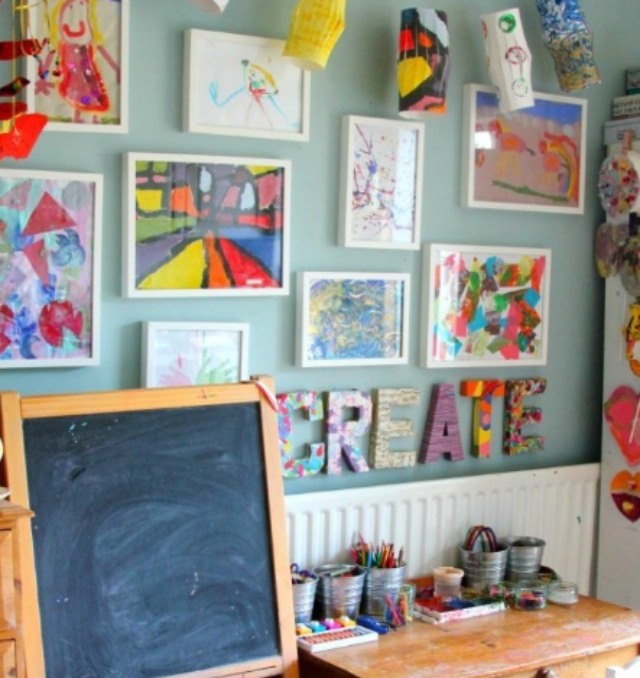
Accent the Wall Behind the Changing Table
Add charm behind the changing station with circle or star-shaped shelves displaying your baby’s treasures. Decorate the wall with sweet rhyming prints, growth charts, or fabric hangings. Keep high-contrast black-and-white patterns 12 inches above the changing pad.
Create a Whole Accent Wall
Transform an entire wall into a fascinating focal point. Paint a hand-painted mural with your child’s favorite characters. Arrange a salon-style gallery wall with framed art and keepsakes. Apply a giant repositionable wall decal as a playful focal feature.
Make a Gallery Wall for Displaying Art
Gather a collection of different-sized frames housing your child’s masterpieces, prints, photographs, and objets d’art. Arrange them decoratively across a wall, maximizing negative space between pieces. Gallery walls showcase your child’s interests while adding visual texture.
Strategic art placement draws attention to meaningful areas like beds, desks, and reading nooks. Displaying cherished artwork and keepsakes personalizes the room, making it great for Wall Art Collecting.
Design and Display Tips for Wall Art
Creating a cohesive gallery of wall art requires thought and planning. Follow these tips for professionally displaying art in your child’s room:
Use a Variety of Frame Sizes and Styles
For visual interest, display art in an assortment of frame finishes and proportions. Mix simple black frames with ornate gold ones. Include small 8”x10” pieces along with oversized 3’x4’ impactful canvases. Varied framing adds depth and texture.
Hang Art at Your Child’s Eye Level
Display the artwork where your seated child can comfortably see it. For toddlers, hang art at 2-3 feet high. Elementary kids view art best around 3-4 feet high.Taller middle schoolers appreciate art hung at 4-5 feet from the floor.
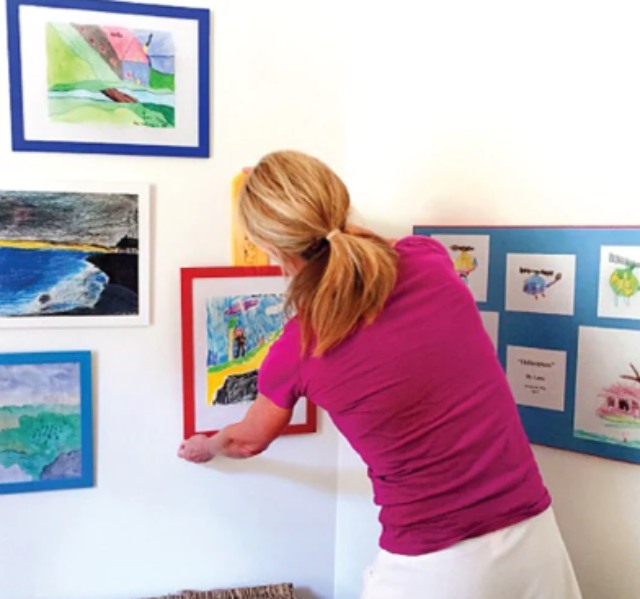
Space Art Evenly for Balance
Use removable adhesive spacers between frames to evenly space gallery wall pieces. Maintain at least 2-4 inches between art edges. Equal negative space prevents a cluttered look.
Group Similar-Themed Pieces
Curate “vignettes” of 2-4 similarly themed or colored pieces. Group nature art together, animal prints together, or all photographs together. Themed vignettes help the art flow harmoniously.
Feel Free to Mix and Match
Don’t limit yourself to one particular style. Eclectic gallery walls containing modern prints, classic oil paintings, mosaic mirrors, and pop art deliver dynamic impact.
With careful planning and design, your child’s wall art will delight. Curating it based on their interests shows love and creativity. Display tips help the art shine. Most importantly, make the room distinctly theirs.
Frequently Asked Questions
Conclusion
Decorating your child’s bedroom with meaningful wall art is one of the joys of parenting. You get to nurture their interests, creativity, and sense of beauty through art. Tailor the wall art to your child’s age, favorite subjects, and room style for a personal look they’ll love.
Strategically place focal pieces of artwork over beds, desks, and reading nooks. Frame and display a collection of art in a creative gallery wall. Most importantly, enjoy curating a special art collection that brings your child happiness and infuses their room with imagination.

